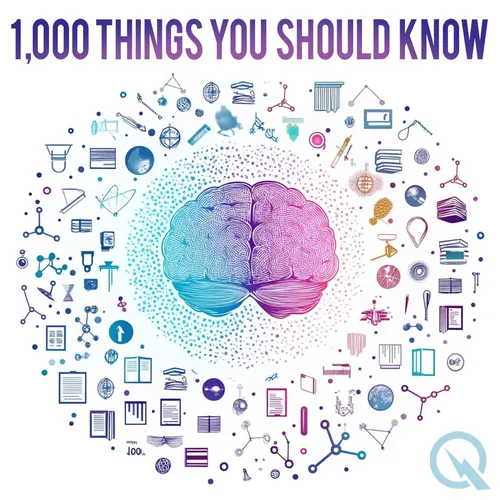Decoding Nutrition Labels: 5 Expert Tips to Read Food Packaging Like a Pro and Make Healthier Choices
- Author
- Inception Point Ai
- Published
- Tue 20 May 2025
- Episode Link
- https://www.spreaker.com/episode/decoding-nutrition-labels-5-expert-tips-to-read-food-packaging-like-a-pro-and-make-healthier-choices--66107133
Welcome to "1000 Things You Need to Know." I'm your host, and today we're decoding those mysterious nutrition labels that seem to require a degree in food science to understand. Let's dive right in!
Ever find yourself staring blankly at a nutrition label, wondering what all those numbers actually mean? You're not alone. Food labels are designed to help us make informed choices, but they can be surprisingly tricky to navigate.
The first step in label-reading mastery is to check the serving size. This is crucial because all the information on the label applies to that specific amount. If a package of cookies lists one cookie as the serving size but you eat four, you'll need to multiply all those numbers by four. Sneaky, right? Many manufacturers use unrealistically small serving sizes to make their products appear healthier.
Next, look at the ingredients list. Ingredients are always listed in order of weight, from highest to lowest. If the first few ingredients include refined grains, sugar, or hydrogenated oils, that's a red flag. A good rule of thumb: the shorter the ingredient list, the better. If it's longer than two or three lines, you're likely looking at a highly processed food.
Let's talk about the percent daily value, or %DV. This tells you if a product has a little or a lot of a particular nutrient. Here's a simple way to remember it: 5% or less is considered low, while 15% or more is high. So if you're watching your sodium intake, you'd want products with a low %DV for sodium.
Now for some common label tricks to watch out for. "Low-fat" often means "high in sugar," and "natural" has virtually no regulated meaning. Even "organic" doesn't necessarily mean healthy – organic sugar is still sugar!
One particularly useful strategy is to ignore the front of the package entirely. Those splashy health claims are marketing, not nutrition information. The real story is always on the back or side panel.
Here's your takeaway: next time you're grocery shopping, take an extra moment to flip that package over and check three things – serving size, ingredient list, and %DV of nutrients you're trying to increase or limit. Just this simple habit can transform your diet and health over time.
Thanks for tuning in to "1000 Things You Need to Know." If you found this helpful, please subscribe for more bite-sized knowledge bombs. This has been a quiet please production, for more check out quiet please dot ai.
For more check out https://www.quietperiodplease.com/
Here is a 1000 ways to save money https://amzn.to/4iaM94Q
This content was created in partnership and with the help of Artificial Intelligence AI
